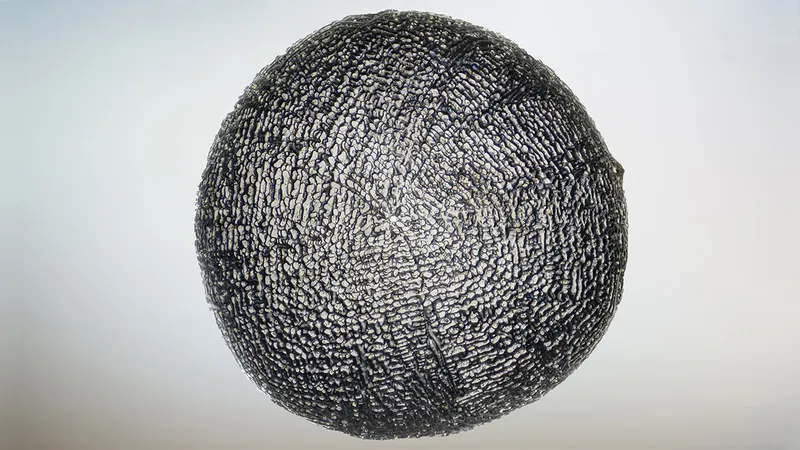
Unveiling Earth's Ancient Climate: Fossilized Micrometeorites Reveal Historical CO2 Levels!
2025-08-28
Author: Sarah
A Hidden Treasure from the Cosmos
Micrometeorites might not catch the eyes at museums, but these tiny cosmic particles, often measuring less than 2 millimeters in diameter, hold incredible secrets about our planet's past. While nearly 50 tons of extraterrestrial debris rains down daily, these microscopic gems are the unsung heroes in our understanding of Earth's ancient atmosphere.
Unearthing Earth's Atmospheric History
Recent research led by Fabian Zahnow, an isotope geochemist from Ruhr-Universität Bochum, dives into the world of fossilized micrometeorites that landed on our planet millions of years ago. By extracting traces of atmospheric gases stored within these particles, scientists have uncovered that ancient levels of carbon dioxide (CO2) during the Miocene and Cretaceous periods closely resembled today’s levels.
Cosmic Time Capsules
The research team analyzed 100 metal-rich micrometeorites, collected from over a hundred kilograms of sedimentary rocks mainly sourced from Europe. These micrometeorites are like time capsules, having absorbed atmospheric oxygen as they traveled through Earth's upper atmosphere, allowing researchers to infer ancient gas compositions.
Unlocking Secrets from the Past
The study reveals that the ratios of oxygen isotopes within these micrometeorites can indicate historical photosynthesis rates and CO2 concentrations. This information is crucial: understanding past atmospheric conditions is key to our knowledge of life on Earth, according to Matt Genge, a planetary scientist at Imperial College London.
Battling Contamination Challenges
However, the study faced challenges with contamination. Water, often mixed with terrestrial oxygen, can compromise the integrity of micrometeorite samples. Strikingly, the presence of manganese in the samples indicated contamination. Only four of the micrometeorites studied were found to be untouched, providing their data credibility.
What Did They Find?
The results indicated that CO2 levels during the Miocene and Late Cretaceous periods ranged from 250 to 300 parts per million—lower than the current rate of approximately 420 parts per million. Though the findings align with previous estimates, uncertainties remain, prompting calls for more precise data.
Future Research Endeavors
Zahnow emphasizes the need to gather pristine micrometeorites from other periods thought to have had even higher CO2 levels, such as the Triassic. Investigating these timeframes could provide vital insights into how ancient ecosystems adapted to significant atmospheric changes.
A Brave Exploration into the Past
Despite uncertainties in their findings, Zahnow's team has paved the way for future research, and their innovative methods mark a significant leap in our attempts to trace Earth's atmospheric evolution. The story of our planet's atmosphere is not just history—it's the story of life itself!

 Brasil (PT)
Brasil (PT)
 Canada (EN)
Canada (EN)
 Chile (ES)
Chile (ES)
 Česko (CS)
Česko (CS)
 대한민국 (KO)
대한민국 (KO)
 España (ES)
España (ES)
 France (FR)
France (FR)
 Hong Kong (EN)
Hong Kong (EN)
 Italia (IT)
Italia (IT)
 日本 (JA)
日本 (JA)
 Magyarország (HU)
Magyarország (HU)
 Norge (NO)
Norge (NO)
 Polska (PL)
Polska (PL)
 Schweiz (DE)
Schweiz (DE)
 Singapore (EN)
Singapore (EN)
 Sverige (SV)
Sverige (SV)
 Suomi (FI)
Suomi (FI)
 Türkiye (TR)
Türkiye (TR)
 الإمارات العربية المتحدة (AR)
الإمارات العربية المتحدة (AR)